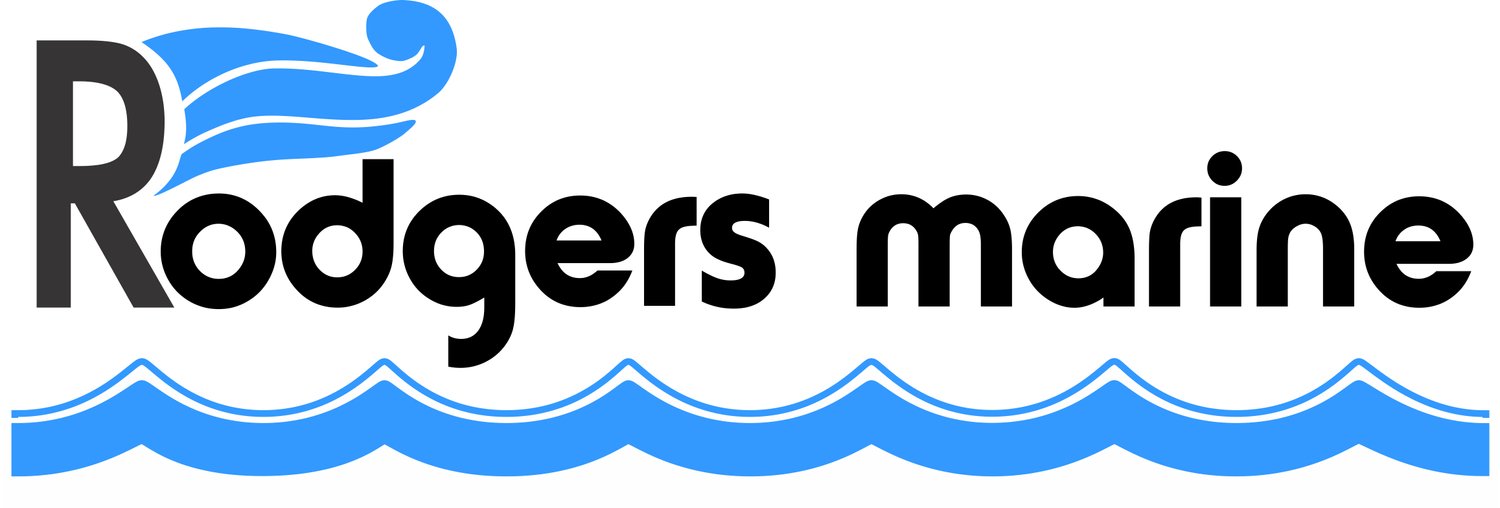Automatic Identification System (AIS) for Ships is a Lifesaver for Yachtsman
By Timothy Jenkins, Rodgers Marine
(Article appears in Nov. 2007 issue of Fresh Water News)
A new navigational system has been developed that I believe is one of the best new products that we have seen in years. Automatic Identification System or AIS is a system used primarily by ships and vessel traffic control systems, principally for identification of vessels at sea. AIS helps to resolve the difficulty of identifying ships when not in visual contact, such as at night, in fog, or while transiting through blind channels. The system was designed for ships to exchange information with each other, such as vessel identification, position, course, speed, etc. It works by integrating an onboard VHF transceiver system with a GPS receiver, Gyrocompass, and rate of turn indicator. All of these items are monitored continuously by the onboard AIS system and then broadcast in a quick burst of digital information. IMO SOLAS requires AIS to be installed onboard all ships greater than or equal to 300 gross tons. It is estimated that 40,000 or more ships, tugs, and large non-commercial vessels currently carry AIS equipment.
While the cost of installing an AIS transceiver aboard a small pleasure vessel is prohibitive for most boaters, several manufactures are now offering a low cost, receive only unit. AIS black box receivers are available in either a single or faster dual channel model. They require just a small VHF antenna for reception, and will pick up locally transmitted AIS signals up to 20miles away. Computers utilizing Nobeltec software as well as some of the newer chart plotters are capable of displaying information from AIS equipped vessels.
The information transmitted from the AIS black box to your chart plotter includes a live real time ship icon, along with heading and turn vectors. Expanded information includes things like ship name, bearing, speed, closest point of approach, size, weight, and type of ship. Utilizing visible vessel targets, along with heading vectors from those targets, you are able to make informed course and speed decisions aboard your own boat.
A customer of Rodgers Marine, who had recently installed an AIS receiver, sent us the following email from Panama.
“We just came into Panama City for the first time with the AIS working. Had up to 32 targets on the screen. It was so much better than just radar, it saved us at least 45 minutes getting through the gauntlet of shipping here because we could immediately tell which ships were at anchor, (most of them) waiting to go into the canal, which were under way and whether they posed any threat. I was also able to hail two ships by name several miles before I could read their hulls and they came back immediately and confirmed their intentions. This is the best new piece of equipment we have had for years. Anyone operating a pleasure boat in and around shipping, as here in the canal, would be crazy to be without one! Jim” .
Almost everyone that has been boating for a few years has had a close call with a large ship or passenger ferry. It always seems like they just appear out of nowhere. With an AIS receiver onboard you can literally see the moving ship before your radar does and before it becomes a collision situation. We have several plotting systems on display operating with AIS technology. Please drop by at your convenience, and take a look, it is amazing.
Here is an example of AIS targets displaying in Nobletec Visual Navigation Suite. The AIS targets are showing with yellow name boxes. Several are underway, and you can see the forward vector and a "trail" plot which appears as gray dots following behind the target so you can see where it was previously. (click on picture for 1024 x 768 full size view)
The information bar across the bottom (called the Nav Bar) has been set to the "Targets" tab, so you can see information about the selected ship "Century Highway No. 2". In the data boxes you can see current real time info about the AIS target, such as "CPA" (Closest Point of Approach distance), "TCPA" (Time to Closest Point of Approach), Range and Bearing to the target, the COG (Course Over Ground) and SOG (Speed Over Ground) of the target, and the Latitude and Longitude. To the right, in the "More Info" list, you see even more information such as you see there now, and you can scroll down and also see what the ships destination is and the ETA to that destination, and info about the ship such as present heading, Beam, Length, and Maximum Static Draught.

